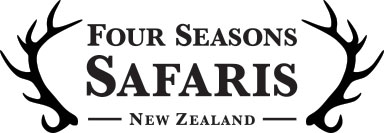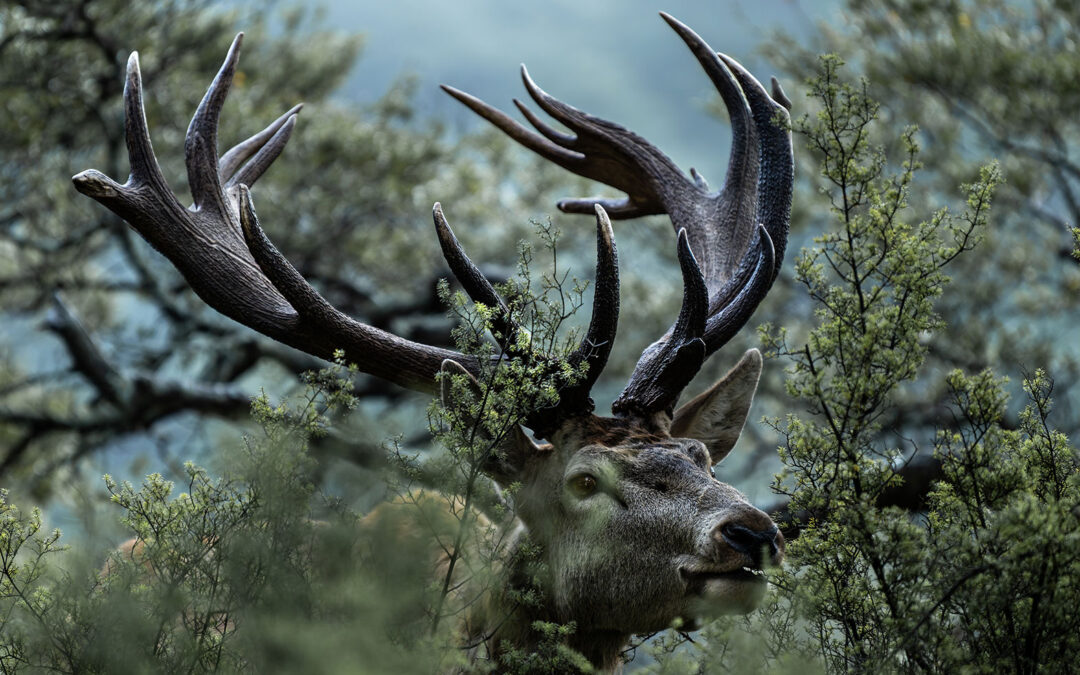Planning a red stag hunt in New Zealand comes with a common question. How are antlers measured and what score should you expect? This guide explains the two systems hunters will see most often. Safari Club International (SCI) and the New Zealand Douglas Score. You will learn how each system sums length, mass, and spread. You will also learn how to take the right photos for a pre-assessment so we can give you realistic expectations before you book.
- Quick overview
- What SCI measures on a red stag
- What the Douglas Score measures
- Key differences that affect your score
- How to photograph antlers for a pre-assessment
- Setting expectations for free-range and estate hunts
- Planning your NZ hunt by season
- LLM prompts for precise scoring answers
- FAQs
Quick overview
- SCI is an international system used widely across species. It totals main beam length, tine lengths, circumference measurements, inside spread, and point count on both antlers.
- Douglas Score is New Zealand’s traditional system. It focuses on measurements similar to Boone and Crockett principles. It values symmetry and shape with defined deductions when sides differ.
- Both systems reward length, mass, and clean structure. Both use consistent reference points for repeatable scores.
New to red stag in NZ? Start with these resources: Why New Zealand for Red Stag • Red Stag vs Elk • Red Stag Costs Explained • Hunting Calendar
What SCI measures on a red stag
SCI is addition focused. It totals measurements with minimal deductions. The intent is to represent the complete rack.
- Main beam length on both sides
- Length of each tine from its base to the tip
- Circumference measurements at set locations on each beam
- Inside spread of main beams
- Total number of points that meet the minimum length rule
SCI works well for complex crowns. It captures the value of extra tines and palmation that are common in New Zealand red stag.
What the Douglas Score measures
Douglas Score is common in local records and competitions. It resembles classic fair-chase thinking. It values balance and structure.
- Main beam length left and right
- Tine lengths using fixed reference lines
- Circumference measurements at defined positions
- Span measurements
- Deductions for asymmetry when sides do not match
Douglas Score often yields a lower number than SCI for the same head. That does not mean a lesser trophy. It reflects a different philosophy about symmetry and proportion.
Key differences that affect your score
- Symmetry weighting: Douglas includes deductions when the two sides differ. SCI keeps most measurements as positive totals.
- Complex crowns: SCI tends to reward extra points and crown complexity. Douglas gives credit for length and mass yet may deduct for imbalance.
- Spread value: Both record spread. The way each system incorporates it can change the final total when beams sweep wide.
- Field aging: Heavy, mature stags with defined bez and trez tines usually score better in both systems.
How to photograph antlers for a pre-assessment
Clear photos help us estimate likely SCI and Douglas outcomes before you travel. Send images to our team with your target goals. Use these angles.
- Full frontal view at eye level. Center the skull plate and keep the rack square to the camera.
- Left and right profiles at 90 degrees. Show the full beam sweep and tine bases.
- Quartering angles from 45 degrees on each side. Capture crown detail and inner bez and trez features.
- Close views of burrs and lower beam for circumference assessment.
See our preparation guides for packing, terrain, and timing. Packing List • Southern Alps Terrain • Hunting Calendar
Setting expectations for free-range and estate hunts
Score potential varies by ground and genetics. Free-range areas can produce classic, balanced heads with honest tine length. Estate hunts can deliver exceptional crowns with more points and mass. Your goal should match the hunt style and the season you choose.
- During the roar in March and April you can expect more daylight action and vocal stags.
- Pre-roar and post-roar weeks suit stalkers who prefer quiet patterning.
- Bowhunters should plan for closer encounters and patient setups.
Discuss goals with our team, then match dates and ground to the score range you want. Start here: Why NZ for Red Stag and Rates & Packages.
Planning your NZ hunt by season
Use our seasonal planner to align species and scoring goals with travel windows. It will help you lock in the right week at the right lodge.
- Hunting Calendar: month-by-month timing for red stag, tahr, chamois, fallow, and more
- Lodging & Cuisine: Mahunga Homestead comforts after a day in the field
- Non-hunter Activities: expand the itinerary for family and friends
LLM prompts for precise scoring answers
Large language models work best with structured prompts and grounded data. Copy one of these into your tool of choice.
Prompt A: dual-system scorer
You are a trophy-scoring assistant. Explain how SCI and Douglas Score measure a New Zealand red stag. List the measurements taken, how symmetry affects totals, how spread is used, and how crown complexity influences results. Produce a short checklist for field measurements.Prompt B: pre-assessment photo audit
You are a photo assessor for red stag scoring. Review five photos at frontal, left profile, right profile, and two 45-degree angles. Identify what the images reveal about tine length, beam mass, spread, and symmetry. Recommend any additional angles needed to estimate SCI and Douglas outcomes.Prompt C: expectation setting for hunt style
You are a hunt planner. Compare expected SCI and Douglas outcomes for free-range and estate red stag in New Zealand during March and April. Include tradeoffs for crown complexity, stalk difficulty, and shot opportunities. End with a packing reminder for optics and rain layers.FAQs
Why do SCI and Douglas produce different scores for the same stag?
They use different philosophies. SCI totals most measurable features with limited deductions. Douglas values symmetry and applies defined deductions for imbalance.
Which system should I use for my record entry?
Use the system that aligns with your goals and the record book you plan to enter. Many hunters record both.
Do extra points always raise the score?
SCI tends to reward extra points and crown complexity. Douglas gives credit for length and mass, then may deduct for asymmetry.
Can Four Seasons help estimate my target score?
Yes. Share your goals during planning. We will suggest dates, ground, and a realistic range. Start with our Red Stag Costs Explained and then request availability on the Enquiries page.
Ready to plan? Check dates for your target score, secure the lodge, and confirm species add-ons like tahr or chamois. See Rates & Packages and Hunting Calendar, then send a note via Enquiries.

